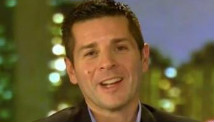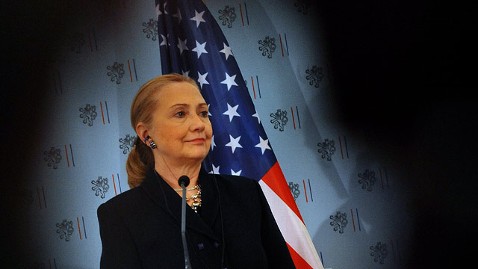Two hours after a midnight deadline for action, the Senate passed legislation early New Year's Day to avert the so-called "fiscal cliff" with an overwhelming vote of 89-8.
Senate passage set the stage for a final showdown in the House, where a vote could come as early as today.
"While neither Democrats nor Republicans got everything they wanted, this agreement is the right thing to do for our country and the House should pass it without delay," President Obama said in a statement shortly after the vote.
"There's more work to do to reduce our deficits, and I'm willing to do it. But tonight's agreement ensures that, going forward, we will continue to reduce the deficit through a combination of new spending cuts and new revenues from the wealthiest Americans," he added.
The bill extends Bush-era tax cuts permanently for people making less than $400,000 per year and households making less than $450,000.
The steep "sequester" budget cuts scheduled to go into effect with the New Year would be postponed for two months.
The deal also would affect taxes on investment income and estates, and extend unemployment benefits for a year.
Officials also decided at the last minute to use the measure to prevent a $900 pay raise for lawmakers due to take effect this spring.
'Fiscal Cliff': Lawmakers Scramble for Last-Minute Deal Watch Video
The failure of a deal to pass Congress by Jan. 1 technically triggers an income tax hike on all Americans and automatic spending cuts, though lawmakers could still prevent a tax hike by making retroactive any legislation that passes in the weeks ahead, experts said.
The deal at hand will not entirely solve the problem of the "fiscal cliff," however. In fact, it could set up a new showdown over the same spending cuts in just two months that would be amplified by a brewing fight over how to raise the debt ceiling beyond $16.4 trillion. That new fiscal battle has the potential to eclipse the "fiscal cliff" in short order.
In addition to extending current tax rates for households making $450,000 or less, the latest plan would raise the estate tax from 35 to 40 percent for estates larger than $5 million; and prevent the alternative minimum tax from hammering millions of middle-class workers.
Capital gains taxes would rise to 20 percent from 15 percent.
The deal would also extend for one year unemployment insurance benefits set to expire today for two million people, and avert a steep cut to Medicare payments for doctors.
"Working though the night and throughout the day we've reached an agreement with Sen. McConnell," Senate Majority Leader Harry Reid, D-Nev., said early Tuesday morning prior to the vote.
"I've said all along our most important priority is protecting middle class Americans, this legislation does that," Reid added.
He said he is "disappointed" they were not able to make the grand bargain and that more work needs to be done in the future.
"But we tried, if we did nothing the threat of a recession is very real," Reid concluded.
Speaking after Reid, Senate Minority Leader Mitch McConnell, R-KY., called the deal an "imperfect solution" and noted this should not be the model on how things get done in the Senate.
McConnell also thanked Vice President Joe Biden, who visited Capitol Hill late Monday night and brokered the deal with McConnell.
The House Democratic leader Nancy Pelosi issued a statement saying that when legislation clears the Senate, "I will present it to the House Democratic caucus."














